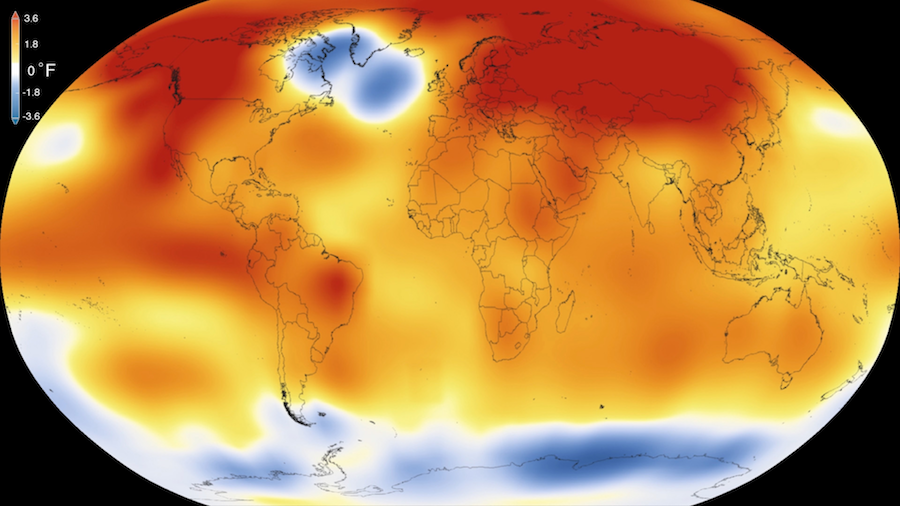The Irminger Sea, a small ocean basin between Greenland and Iceland, is known for its harsh and extreme weather conditions during winter. Research cruises that take measurements in the subpolar North Atlantic almost exclusively do so in summer, although the area is particularly interesting in the convectively active winter season.
Wintertime on-board ship measurements in the Irminger Sea were collected in April 2015 by scientists from the Bjerknes Centre for Climate research, as part of the SNACS project funded by the Norwegian Research Council. The results are now published in Nature Communications by Friederike Fröb, a PhD student at the Geophysical Institute of the University of Bergen and the Bjerknes Centre for Climate Research, with colleagues from the University of Bergen, Uni Research Bergen, the University of Toronto and the Bedford Institute of Oceanography, both in Canada.
Compared to the far more famous Labrador Sea where deep convection is observed almost every year, convection in the Irminger Sea is more rare, and more variable in extent and strength. The 2015 data show record winter mixed layers of 1,400m depth – usually observed are 400m. The last time winter mixing had been that deep was probably in the mid-1990s, however, there is only indirect evidence for that; no direct measurements are available from that time. In the late 2000s, during the winters 2007/08 and 2011/12, convection down to between 800m and 1,000m was observed by ARGO floats. With the newly collected data in 2015, oxygen and carbon concentrations during active convection have been determined as well.
These data show that oxygen and anthropogenic CO2 concentrations were both almost saturated with respect to the atmosphere in the upper water column. This resulted in a replenishment of depleted oxygen levels at mid-depth as well as a sequestration of large amounts of anthropogenic carbon to the deep ocean. Compared to historic cruise data in 1997 and 2003 covering the same transect as the 2015 cruise, the anthropogenic carbon storage rate almost tripled in response to the large variability in the physical climate system.

The main driver for that extreme convective event in 2015 was the strong heat flux from the water column, a consequence of exceptionally strong winds that developed that winter around the southern tip of Greenland. The winter 2014-2015 was also the coldest on record in the North Atlantic, a phenomenon known as the 'cold-blob'. This cold-blob has been tied to a reduced Atlantic Meridional Overturning Circulation as a consequence of increased freshwater runoff from the melting Greenland Ice Sheet and the Arctic, which increases ocean stratification. Although observations of one extreme event during winter can not be used to reject a hypothesis that is based on long-term trends, global climate model predictions are definitely challenged. The ability or lack of such to resolve small scale atmospheric phenomena like the ones in the Irminger Sea might be of greater relevance to simulate convective processes in the North Atlantic than anticipated.
Overall, the cruise observations reveal the strong, direct link between atmospheric forcing, oceanic heat loss, ventilation, and anthropogenic carbon storage in the Irminger Sea. Further, the cruise data shows the necessity of ongoing, continuous data collection in remote areas also during harsh seasons, allowing to study highly variable natural processes as well as the impact of anthropogenic climate change on ocean biogeochemistry.

